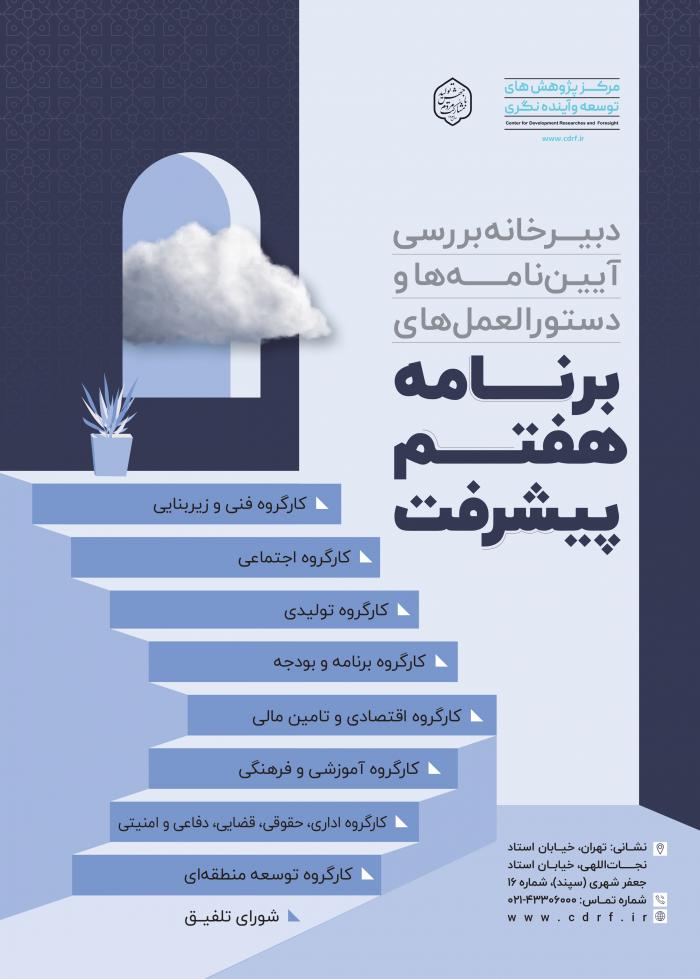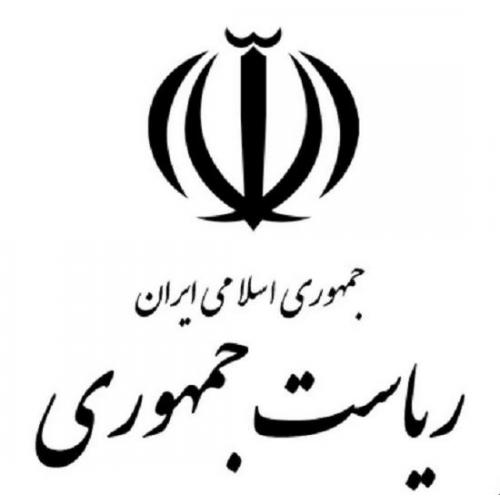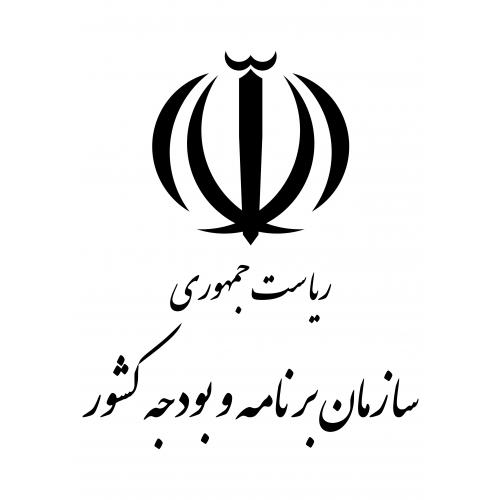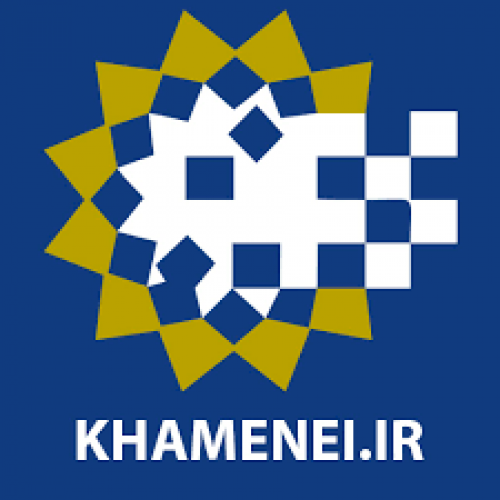
-
بررسی آییننامهها و دستورالعملهای برنامه هفتم پیشرفت
-
بررسی عوامل موثر بر افزایش تصادفات و تلفات جادهای و سوانح رانندگی و دادهکاوی تلفات انسانی
-
سازماندهی و بازآرایی فضایی آموزش عالی کشور
-
به روز رسانی سند ملی آمایش سرزمین
-
انجام مطالعات مناطق آزاد به عنوان نواحی پیشران اقتصادی کشور
-
اصلاح ساختار بودجه و پیاده سازی نظام یکپارچه مدیریت اطلاعات مالی دولت (IFMIS)

The systematic examination of the progression of policy content types within developmental plans indicates that policymakers in the field of development have consistently allocated half of their policy guidelines to public policies. This suggests an ongoing effort to address and resolve executive issues and problems within these developmental plans. Furthermore, the temporal increase in the proportion of guiding policies, coupled with a simultaneous decrease in comprehensive policies, demonstrates that when policymakers articulate values, they do so within the framework of policy guidelines or recommendations, alongside executive concepts. The findings reveal that the least favorable status in terms of content pertains to the policy guidelines of the second developmental plan, while the most favorable status is associated with the policy guidelines of the sixth plan.
In terms of policy strategies within developmental plans, it appears that development policymakers do not exhibit a consistent and significant behavior regarding the adoption or non-adoption of a strategy, as well as the type of policy strategy that is foundational or detailed. It seems that development policymakers have not maintained a prior stance on incorporating basic and detailed strategies in policies. Instead, they have increased the proportion of detailed strategies during certain periods (such as during the third and fifth programs) and increased the proportion of basic strategies during other periods (such as during the fourth program).
It is crucial to note that an average of 44% of policy guidelines lacking a strategy among policy guidelines could be considered a significant deficiency in these policies. This is because these types of policies are debatable both from the perspective of the definition and theoretical basis of policy guidelines and from the perspective of policy impact. The results indicate that the least favorable status in terms of structure is related to the policy guidelines of the fifth developmental plan, while the most favorable status pertains to the policy guidelines of the fourth plan.
The formulation of the general policies for the seventh development plan appears to be influenced by five principal factors that stakeholders should consider during the preparation and formulation process.
The first factor pertains to the foundation for the extraction and formulation of general policies. This report posits that until the Islamic-Iranian development model is fully developed, the formulation of optimal and reliable general policies for development plans remains unattainable.
The second factor involves the categorization of the general policies of development plans. An examination of previous general policies reveals that all these policies, with the exception of those from the second development plan, have been based on regulated affairs, resulting in significant thematic multiplicity and dispersion. It is proposed that in formulating the seventh development plan, macro-development issues should serve as the categorization basis for the general policies, which should then be formulated around these issues.
The third factor concerns the content of the general policies, which necessitates a robust and defensible theoretical foundation for each clause of the general policy. This report introduces the concept of a “problem analysis map,” asserting that policy clauses should be prepared and formulated in accordance with this map and its dimensions. The fourth factor aims to fortify the relationship between the general policies and the seventh development plan such that the plan is comprehensive and prohibitive of the general policies and is derived from these policies. In this context, it is also suggested that the overarching objectives of each development plan be extracted from the macro-issues included in the problem analysis map, with strategies and executive policies being derived from policy clauses. Finally, the fifth factor confronting the general policies of the seventh development plan involves achieving a desirable content and structural orientation. This report recommends that the Expediency Discernment Council prepare a regulation for standardizing general policies and elucidate the content and structural rules of an ideal general policy. It is also suggested under this factor that the general policies of the seventh development plan should predominantly move towards guiding policies in terms of content and towards general policies with basic strategies in terms of structure.



